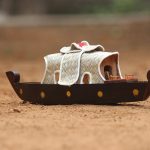Top 7 Archaeological Sites in Kerala you must visit!
Many presume Kerala to be a destination merely for honeymoon couples, families with kids and nature lovers. It’s true that picturesque hill stations and scenic backwaters of Kerala have gained tremendous popularity. But the land has more depth than you would think. History enthusiasts would know what we’re talking about. When they visit the place, they find it surprisingly delightful. One reason for this could be the historical town of Fort Cochin. But apart from that, the state of Kerala also features a number of simple yet graceful archaeological sites. Travelers must try to visit at least a few of them during their trip in Kerala.
Archaeological sites provide great insight into a land’s history and culture. They tell fascinating stories about ancient people who lived there. They even relate tales of prominent events that took place in the bygone eras. And sometimes, they reflect the general human behaviour of a particular civilization. Simply put, history speaks to us through archaeological sites. Why not experience the mystery yourself in your next visit to Kerala.
Have a look at some of the most significant archaeological sites in the state of Kerala
1. Eddakal Caves

The famous Eddakal Caves are located about 25 km away from Kalpetta in Wayanad. They lie 1200 m above sea level. The caves are popular for their unique pictorial writings. Historians suggest that these writings date back to 6000 B.C.E. Eddakal Caves is the only archaeological site in India that has carvings from the Stone Age Era. Those carvings are of human and animal figures as well as of stone tools. It would require a good amount of walking and trekking to cover the site properly. But the cool temperature inside the caves makes the trek easy.
2. Bekal Fort

Bekal Fort is the largest fort in the state of Kerala. It was built in 1650 A.D. next to a beach in the Kasaragod District. The high waves from the beach keep striking the citadel creating a picturesque scene for tourists. Some of the fort’s important features are its water tank, the tunnel and a magazine. The fort’s Observation Tower provides a panoramic view of the various towns in the vicinity. The surrounding area of the fort is also beautiful. It has majestic trees, a rock garden and two beautifully built Theyyam sculptures.
3. Mattancherry Palace

Mattancherry Palace was built by the Portuguese in 1557 A.D. Many years later, the Dutch took control over Cochin and renovated the palace. That is why it became known as the Dutch Palace. Although quite small, the palace has a variety of things to showcase. For example, it has a beautiful gallery displaying attires, turbans and weapons used by kings. You will also find exhibits of ancient maps, royal palanquins, silver sequined gowns, royal umbrellas and the ceremonial royal sword. One of the chambers in the palace has 48 paintings depicting the Ramayana.
Read More about Mattancheri Place
4. St. Angelo Fort

St Angelo Fort was built in 1505 by Dom Francisco de Almeida, the first Portuguese Viceroy of India. The triangular fort was made with red laterite stones. It rests on a cliff which is next to the magnificent Arabian Sea. The fort has huge chapels, stables, a prison and an ammunition storehouse. It also has cannons facing the sea. From the fort, you get a fantastic view of the Moppila Fishing Bay as well as the Dharmadam Island. The garden around the fort is quite beautiful.
Read More about St Angelo Fort
5. Padmanabhapuram Palace

Padmanabhapuram Palace is a spectacular wooden palace belonging to the 16th century. It lies at the foot of Veli hills in Kanyakumari, the southern tip of India. A significant feature of the palace is its 300-year old clock found in the clock tower. The palace is also famous for its 17th and 18th century murals, royal chairs with Chinese carvings, hanging brass lanterns and carved ceilings with 90 different floral designs. Art lovers would certainly have a fantastic experience when they visit this palace.
Read More about Padmanabhapuram Palace
6. Jain Temple Wayanad

The Jain Temple in Wayanad is a prominent archaeological site belonging to the 13th century. The site reflects the unique architectural design of the then ruling Vijaynagar Dynasty. Travelers find the history attached to this temple rather interesting. Originally, it served as a shrine. Then it became a centre of commercial trade. Much later in the 18th century, the famous king Tipu Sultan used the place as an ammunition store or battery. And because of that, the region around the site came to be known as Sultan Bathery.
Read More Sulthan Bathery Jain Temple
7. Thirunelli Temple

Thirunelli Temple is an age-old temple in North Wayanad. It lies at an altitude of 900 m above sea level. The exact date of the temple’s construction is unknown. But historians believe that it had existed in the 10th century C.E. The temple was an important pilgrim centre back in the old days. There are majestic mountains and thick green forests around the temple. In those forests surrounding the temple, you will find ruins of two ancient villages.
Read More about Thirunelli Temple



